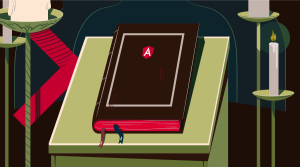“Origin & Importance” is one of the four steps of the CSS Cascade. This step determines which declaration will win — between author, user, and browser (or user-agent) styles. It also determines which declarations will win between normal and important. This video is just a small part of my course “Understanding the CSS Cascade” on Learnable.com. Over a series of five lessons in this course, you will learn the four Cascade steps — used to determine how browsers sort declarations to determine their priority. Hope to see you there! [youtube pjBCR2N7Whk]
Frequently Asked Questions about CSS Cascade
What is the CSS Cascade and why is it important?
The CSS Cascade is a fundamental concept in CSS that determines how to combine property values originating from different sources. It’s crucial because it helps in resolving conflicts between different CSS rules that apply to the same element. The cascade follows a specific order of precedence, taking into account the specificity of the selector, the importance of the rule, and the order in which the rules are declared in the CSS document.
How does the CSS Cascade work?
The CSS Cascade works by following a set of rules to determine which style will be applied to an element. It starts by checking the importance of the rule, then the specificity of the selector, and finally the order of the rules. If two rules have the same importance and specificity, the one that comes last in the CSS document will be applied.
What is the origin in CSS Cascade?
The origin in CSS Cascade refers to the source of the CSS rule. There are three types of origins: author, user, and user agent. The author origin refers to the styles written by the website developer, the user origin refers to the styles set by the user in their browser settings, and the user agent origin refers to the default styles set by the browser.
How does the order of cascading work in CSS?
The order of cascading in CSS works by following a specific sequence. First, it checks the importance of the rule, with ‘!important’ rules taking precedence. Next, it checks the specificity of the selector, with more specific selectors taking precedence. Finally, it checks the order of the rules, with later rules overriding earlier ones.
What is the history of CSS and its cascade feature?
CSS, or Cascading Style Sheets, was first proposed by Håkon Wium Lie in 1994. The cascade feature was introduced to resolve conflicts between different style rules that apply to the same element. Over the years, CSS has evolved with new features and improvements, but the cascade remains a fundamental concept.
How does inheritance work in CSS Cascade?
Inheritance in CSS Cascade is a mechanism where properties are passed from parent elements to their children. This means that if a property is set on a parent element, its child elements will inherit that property by default, unless a different value is specified.
What is the ‘transform-origin’ property in CSS?
The ‘transform-origin’ property in CSS is used to change the position of the origin of transformation of an element. By default, the origin of transformation is the center of the element, but with ‘transform-origin’, you can set it to any point within the element.
How can I control the CSS Cascade?
You can control the CSS Cascade by using specific selectors, ordering your CSS rules carefully, and using the ‘!important’ rule sparingly. Remember that more specific selectors and later rules take precedence in the cascade.
What are some common issues with the CSS Cascade?
Some common issues with the CSS Cascade include conflicts between rules, unexpected inheritance of properties, and overuse of the ‘!important’ rule. These issues can be resolved by understanding how the cascade works and writing your CSS code carefully.
How can I learn more about the CSS Cascade?
You can learn more about the CSS Cascade by reading CSS documentation, following online tutorials, and practicing writing CSS code. Remember that understanding the cascade is crucial for writing effective CSS.
 Russ Weakley
Russ WeakleyRuss Weakley is a world-renowned author, speaker and CSS expert, with a detailed knowledge of web design and development. Russ produced a series of widely acclaimed Sitepoint tutorials on CSS. He is currently touring a series of Responsive Web Design workshops around Australia.






